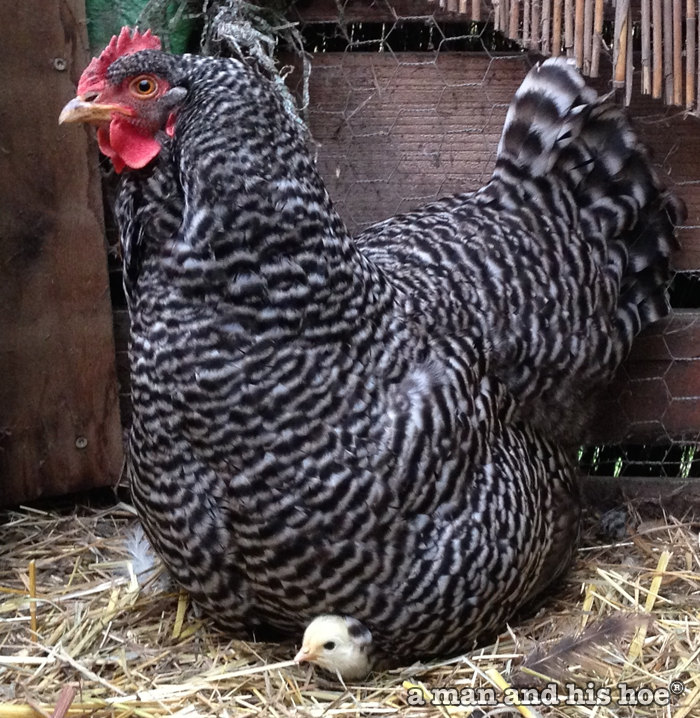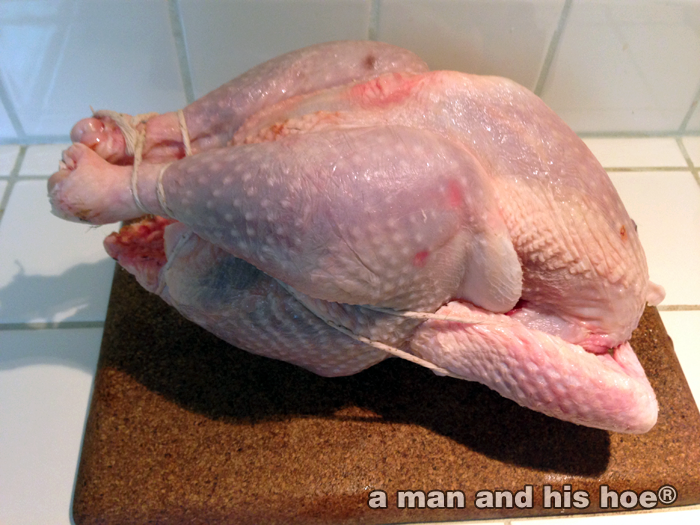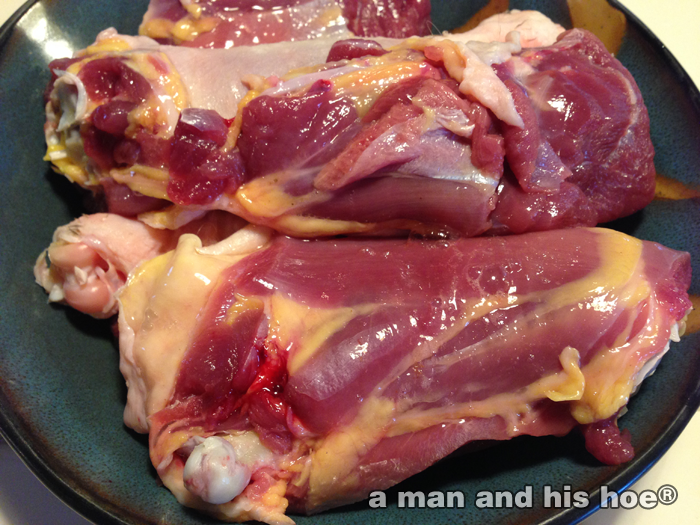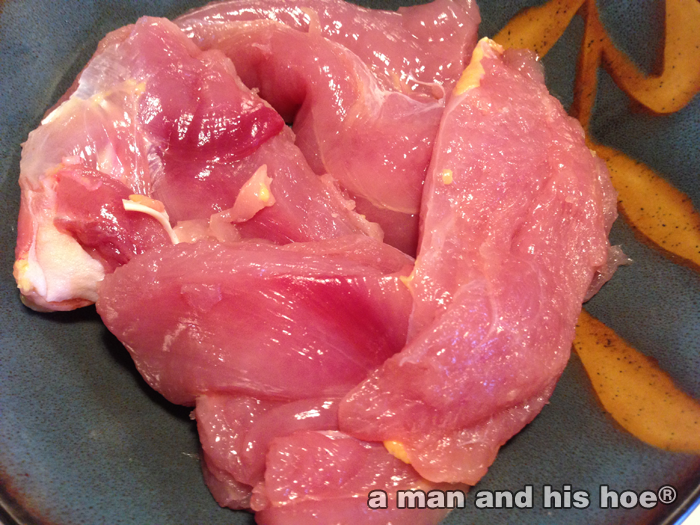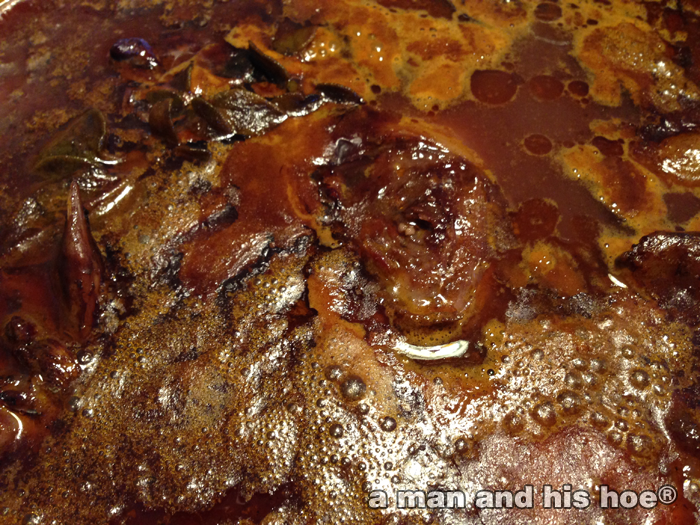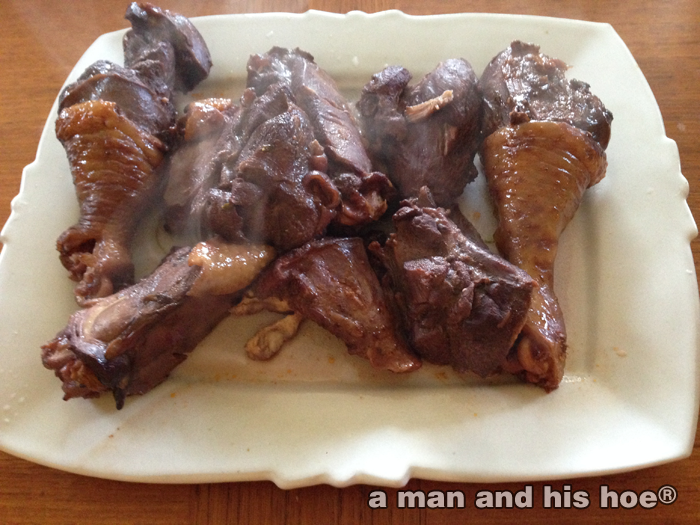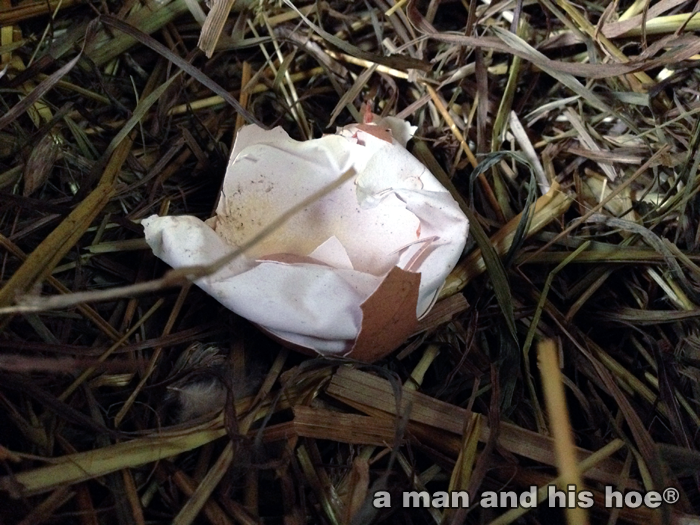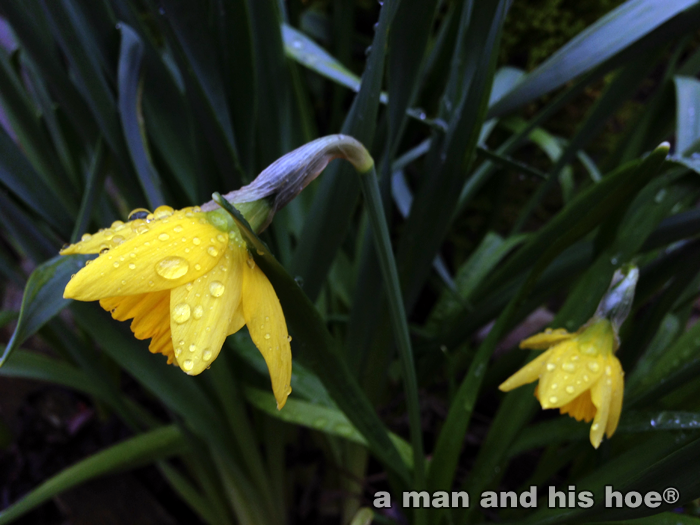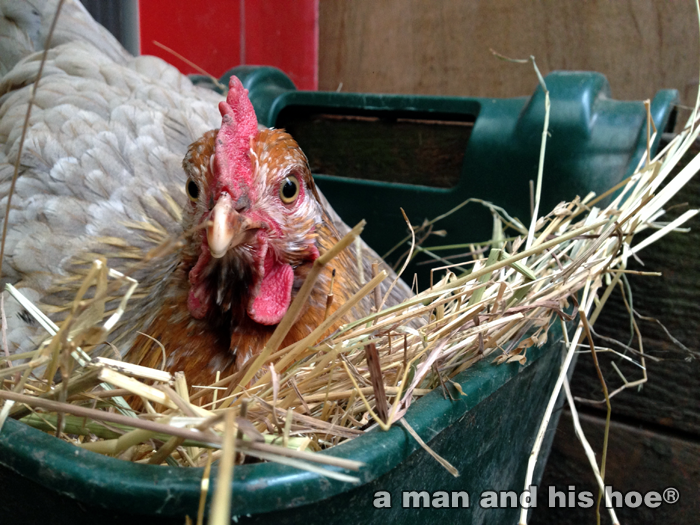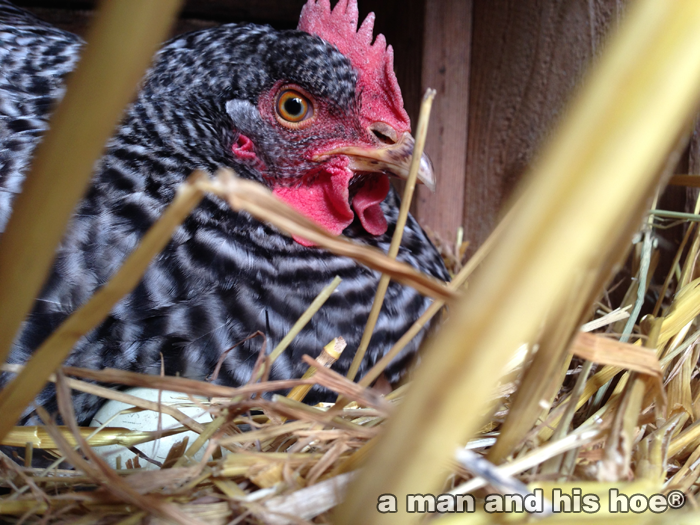
It’s about her last day brooding. I can hear some of her chicks starting to peep. They start peeping before they hatch so I’m not sure if some have already hatched, or if they are about to. So what drives a hen to sit on a clutch of eggs for three weeks? Is it love? Nothing but instinct? What drives a woman to carry a child to term. Is it love? Nothing but instinct?
Is it just the driving force of hormones? Maybe that’s all love is. What’s in it for the hen? Once the chicks hatch, she will spend one, two, up to three months devoted to them. Then they leave her, she leaves them, either way she doesn’t benefit after that. They don’t dote over her after they are raised. They don’t bring her presents on Mother’s Day or take care of her when she gets old. Since she personally doesn’t benefit, you might say that a hen’s love for her chicks is greater than that of a human’s love for her children. After all, most human parents receive many benefits in return for the love they shower on their children. Many of their children provide plenty of love in return, even caring for their parents as they age. A hen can never count on that.
You need vibrant eggs for a hen to incubate them into chicks. When you buy eggs from a man and his hoe®, you know you are getting very vibrant eggs. My eggs are not dead things. They are very much alive. All it takes is three weeks of gentle heat to turn them into healthy chicks. It’s something we tend not to notice when we buy groceries. Almost all of the things we eat are alive. Any fresh salad is a collection of living plants. If you eat eggs, dairy, or meat, all of those things are the products of living things. And it is love that creates all living things. Love (hormones?) is the driving force which makes things grow and reproduce and grow and reproduce and grow a million, billion, trillion, quadrillion, quintillion, sextillion, septillion, octillion, nonillion, decillion, undecillion, duodecillion, tredecillion, quattuordecillion, quindecillion, sexdecillon, septendecillion, octodecillion, novemdecillion, vigintillion, unvigintillion, duovigintillion, infinite times. (how many?)
Today is the warmest day so far of this year. Many of you may laugh to hear that it isn’t even 60ºF (15.5ºC) yet. But it feels like an early spring heat wave for us. The dogs are loving this warm, sunny day.

